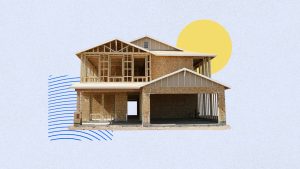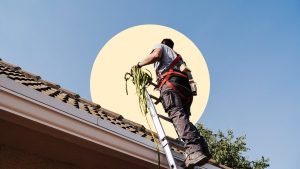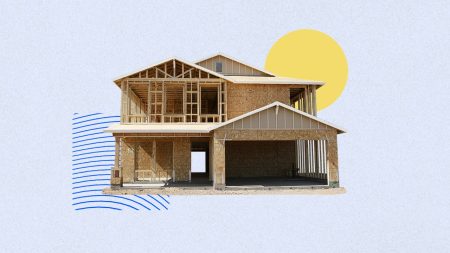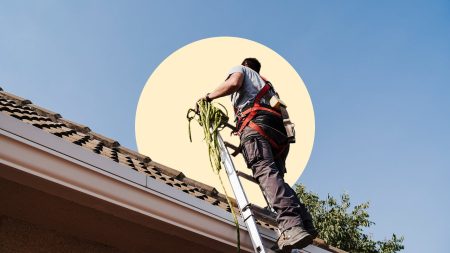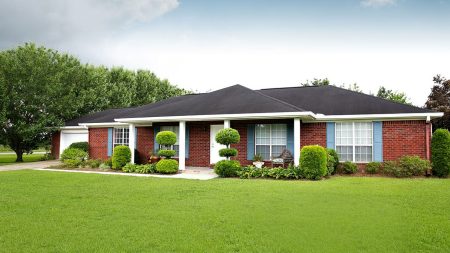If you’re a longtime homeowner, chances are you’re sitting on a gold mine. Home values have surged in recent years, and according to the Federal Reserve, baby boomers hold more than $17 trillion — half — of the nation’s home equity.
So, what’s an older homeowner to do with all that housing wealth?
“It depends on the circumstances, the goals and the needs the individual has, but it’s certainly as good a time as we’ve ever seen to [access your home equity],” says Fred Bolstad, head of Retail Home Lending at U.S. Bank. “There’s an unprecedented amount of equity today because of the appreciation we’ve seen over the last 5 to 10 years. If someone has been in the house for a long time, there are a number of ways they can go about it.”
Those options include a home equity loan, a reverse mortgage, downsizing and more. If you’re an older homeowner, here are steps to help you start thinking about how you might take advantage of your equity.
1. Establish your goals
Before pulling equity from your home, ask yourself, “What am I trying to accomplish?” Some of the more common concerns for older homeowners include retirement income, the cost of long-term care and aging in place.
“We all know that the cost of living has gone up exponentially,” says Michael Gifford, CEO and founder of Splitero, a home equity investment provider based in San Diego. “The cost of health care and aging in place is much more expensive today than it ever has been. The one asset that most Americans have in their later years is their home.”
-
More than half of American workers feel behind where they should be on their retirement savings, according to Bankrate’s 2024 Retirement Savings Survey.
-
Thirty percent of baby boomers have been carrying a balance on their credit card for five years or more, according to Bankrate’s 2025 Credit Card Debt Report.
-
Nearly 11.2 million older households (age 65 or older) were considered cost-burdened as of 2021, according to the Joint Center for Housing Studies of Harvard University.
-
Roughly two-thirds (68 percent) of baby boomers live in homes that are at least 30 years old.
-
Forty-one percent of homeowners age 65 to 79 had a mortgage on their primary home as of 2022, up from 24 percent in 1989, according to the Joint Center for Housing Studies of Harvard University.
2. Understand how much equity you have
The amount of equity in your home impacts what options you have at your disposal. If you still have a mortgage with many more years left, you won’t be able to tap as much equity.
You can get an idea of your level of equity with an online home value estimator and some basic math. Simply subtract your home’s value from what you still owe on your mortgage, if you have one. The result is your home equity.
3. Review your options
There are many ways to tap your equity, and each has its pros and cons. Some strategies require a monthly payment, and all of them involve your home as collateral. That means you run the risk of foreclosure if you can’t pay back what you owe.
Home equity loan
Home equity loans provide you with a lump sum based on a portion of your home’s equity, with the home as collateral. They typically have a fixed interest rate and fixed monthly payments, usually over 5 to 30 years. If you still have a mortgage, the home equity loan would be considered a second mortgage.
A home equity loan can be a good option for older homeowners on a fixed income who need a large sum at all once, want predictable monthly payments and know exactly how much money they need — if you borrow too little, there’s no guarantee you’ll qualify for another loan, and if you borrow too much, you’ll still need to repay it with interest. The payments start right away, too, and you can’t deduct the interest unless you use the funds to improve your home.
Home equity line of credit (HELOC)
A home equity line of credit (HELOC) is a revolving line of credit, similar to a credit card. It allows you to borrow against the equity in your home, typically up to 80 or 85 percent, though some lenders go as high as 100 percent. You can access some or all of the funds over a draw period, often up to 10 years. Once that ends, you’ll repay everything you borrowed with interest, typically over 20 years.
HELOCs are especially popular among homeowners age 60 and older, according to the Federal Reserve Bank of New York.
“The most common reasons that people take HELOCs out and to some extent, seniors too, is home improvement or home renovation,” Bolstad says.
However, most HELOCs have variable rates, which can be tough for some older homeowners to handle, especially if on a fixed income.
“Your monthly payment could change based on the prime rate,” says Michael Micheletti, chief marketing officer at Unlock Technologies, a home equity agreement provider based in Tempe, Arizona. “Rates go up. Rates come down. The interest rate is variable. That’s meaningful for somebody that may not be able to absorb a monthly payment shock.”
Home equity sharing agreement
A home equity sharing agreement, also known as a home equity or shared equity investment, is an arrangement in which a company exchanges part of your home’s equity or a portion of your home’s future appreciation for a lump sum. These aren’t as widely available as HELOCs or home equity loans.
With this option, you don’t have to make monthly payments or need a perfect credit score. However, at the end of the term — which can range from 10 to 30 years — you’ll need to pay off the entire debt, which could be substantial.
Still, it’s worth exploring if you aren’t eligible for a line of credit or loan.
“For a retiree that may have limited income, they may not be able to qualify for a product like a home equity line of credit or home equity loan because they may not have the necessary income to meet that obligation,” Micheletti says.
Cash-out refinance
A cash-out refinance replaces your current mortgage with a new, larger loan that includes the remaining balance of the original mortgage and additional funds as cash based on your home’s equity.
The new loan comes with a new interest rate and term, which could mean you’re paying more each month. The average baby boomer has a mortgage rate of 4.1 percent, according to Freddie Mac, but today’s cash-out refinance rates are closer to 7 percent.
The new loan is also bigger, so it increases your overall debt load.
Reverse mortgage
A reverse mortgage allows homeowners age 62 or older (sometimes 55 or older) the ability to tap their home’s equity, but instead of requiring a monthly payment, you’ll receive tax-free payments. These can help supplement a pension or Social Security payments in retirement.
“What I like about the reverse mortgage is it’s not taking away from the fixed income of our clients,” says Rose Krieger, senior home loan specialist at Churchill Mortgage. “These are loans that you do not pay monthly payments on and they’re typically 30-year loan terms.”
Unlike home equity loans or HELOCs, though, you’ll need a substantial amount of equity to qualify, and you’ll still have to pay for homeowners insurance, property taxes and maintenance or repairs. Reverse mortgages can impact your eligibility for Medicaid benefits, as well, and they can complicate matters for heirs.
For those reasons, Krieger says a reverse mortgage should only be used as a last resort.
Pass on the home to your heirs
Your home is a significant asset, but you don’t have to access the equity today with a HELOC or reverse mortgage. Instead, your goal could be to leave it to your children or heirs.
“A lot of people are making that choice right now because a lot of those children are having difficulty with housing,” Gifford says. “Rents are high. They can’t find a house to buy. They need a larger down payment. Whatever the case is, it’s harder to buy a house these days than it ever has been before. The senior population owns a large percentage of the housing in the U.S., so a lot of people are making that exact choice.”
“Maybe they need to do some remodeling,” Krieger says. “Maybe the kids are going to college. Whatever it may be, the payment shock of a cash-out refinance might not be in the budget.”
Sell and downsize
If you’ve lived in your home for a while and kept up with maintenance, chances are you have considerable equity and you’d walk away from a home sale with some extra cash in your pocket. In 2024, the typical home seller made a profit of $122,500, according to ATTOM.
Moving to a smaller, less expensive home could make sense for you — if you can find something affordable in your desired location.
“Not a lot of people are selling because they have to find a home that they like better than their current house, which in a lot of cases, is difficult,” Gifford says. “Two, they’re going to be paying substantially more for that because home prices are up.”
Read the full article here

